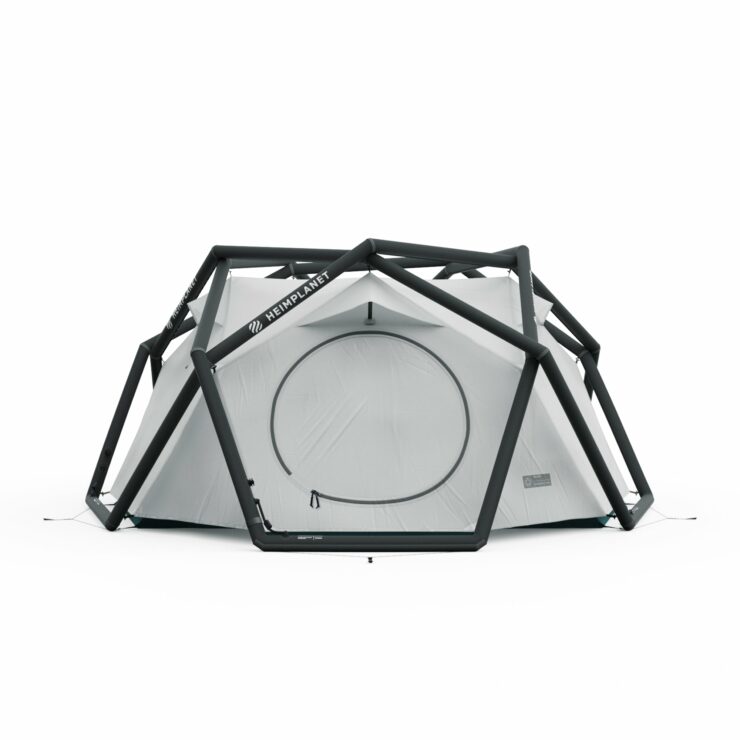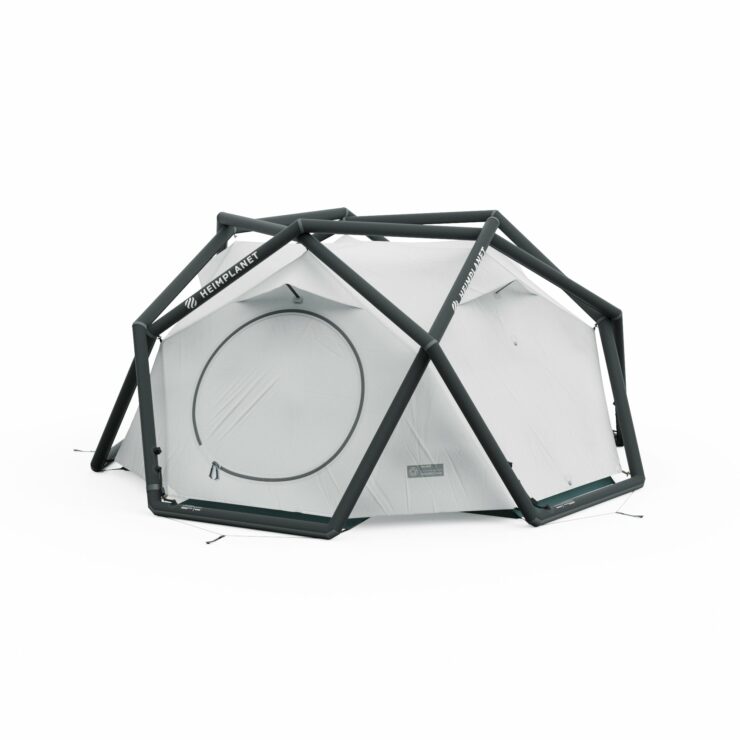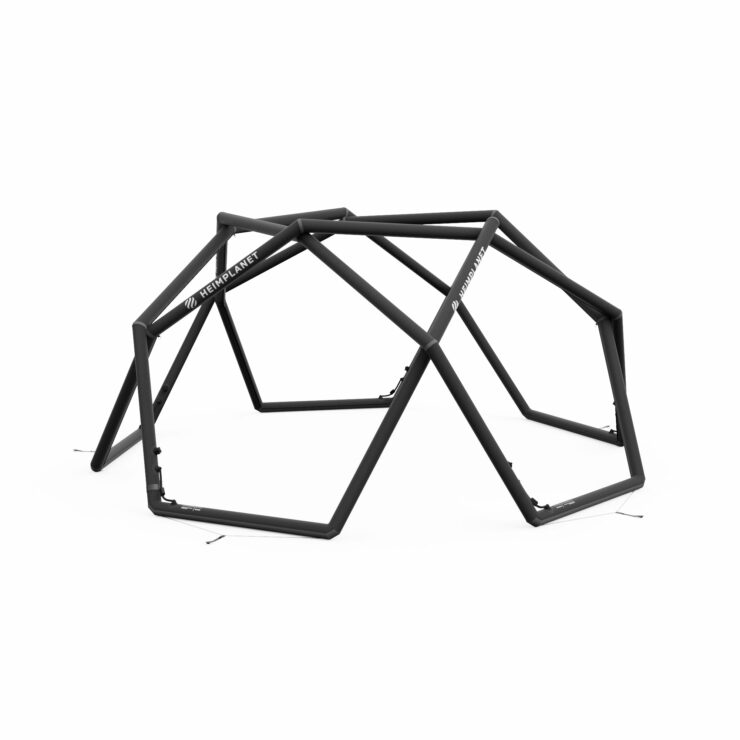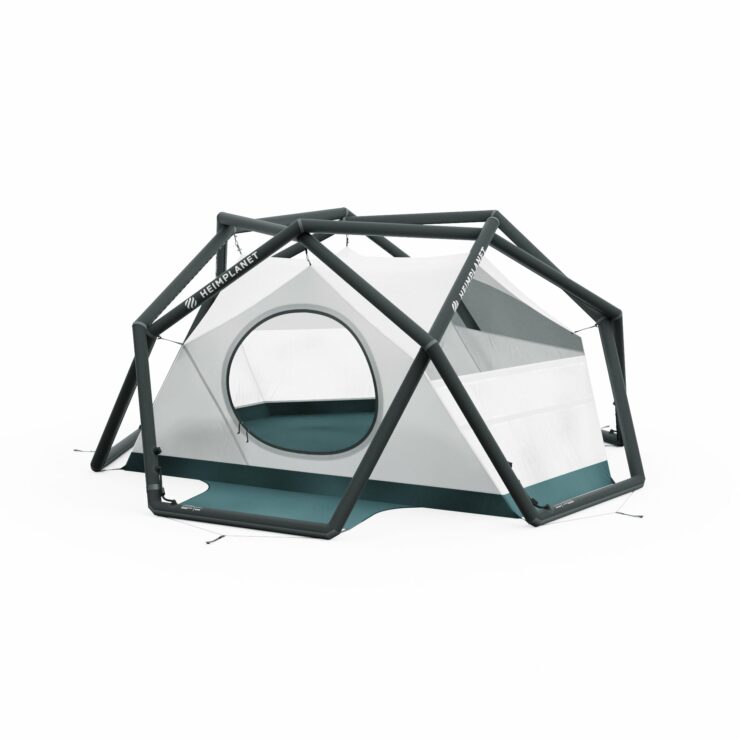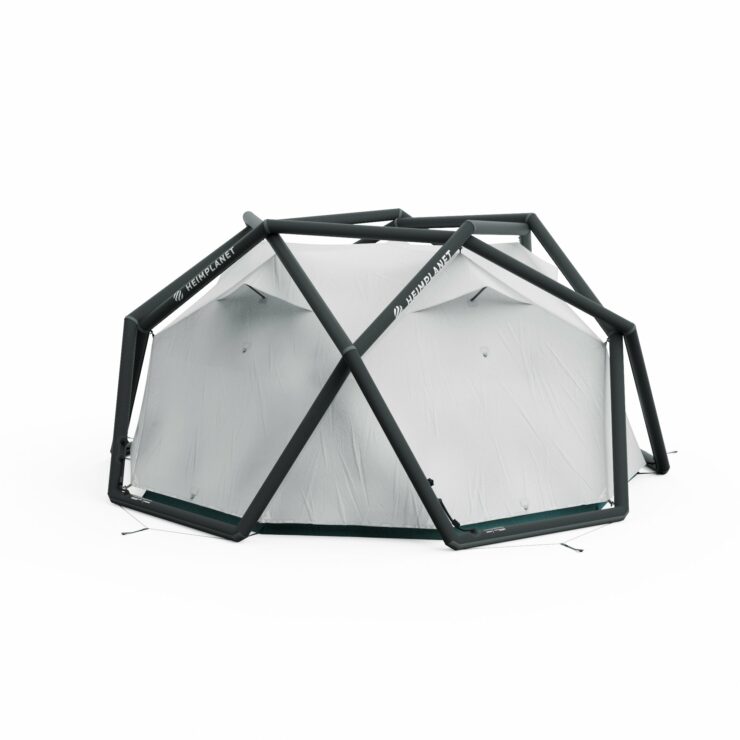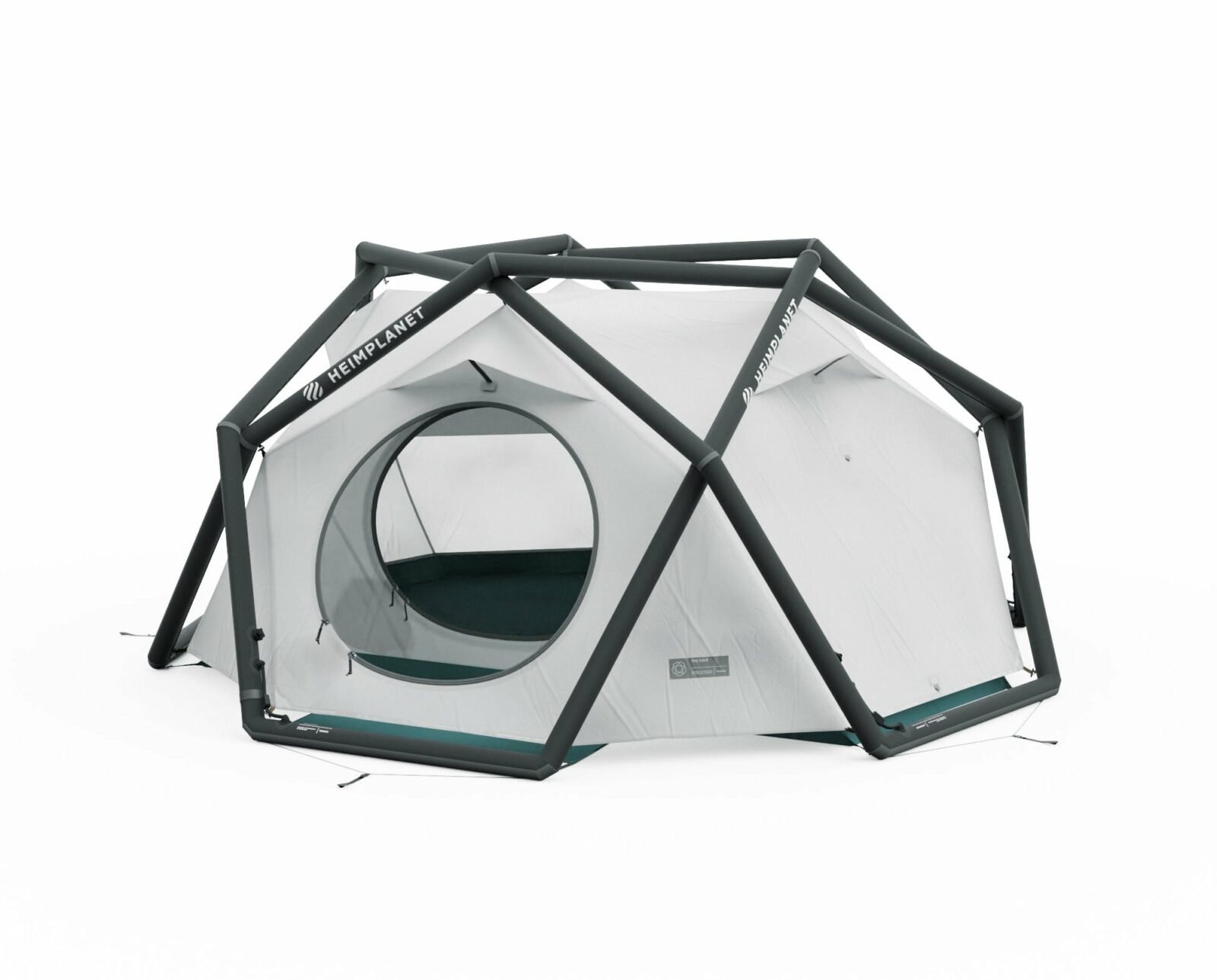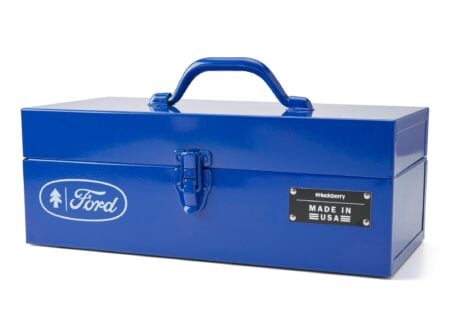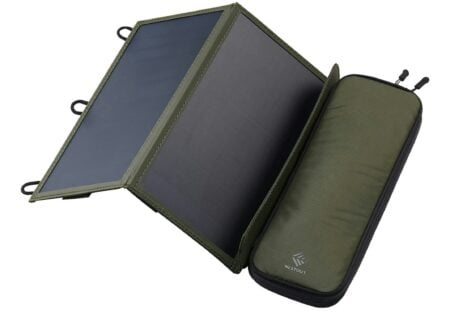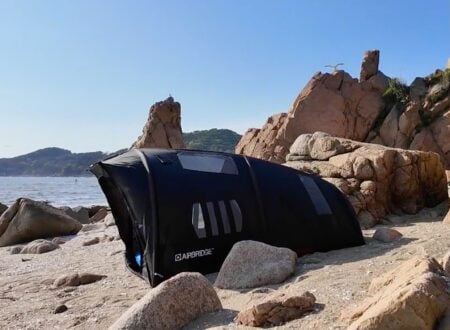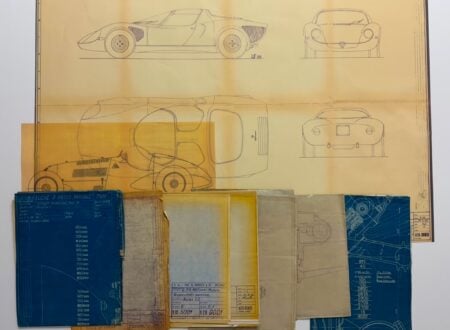This is the Cave, it’s a geodesic dome tent from Heimplanet with an inflatable structure designed to accommodate up to three people and their gear, and it can be set up in approximately 60 seconds.
Heimplanet was founded by a group of German friends in 2011 after years in development, and the Cave tent was their first design.
The idea for a tent that could be set up in a manner of seconds first occurred to the founders during a surf trip along the Portuguese coastline, it was raining one day when they arrived at the campsite and the process of erecting a tent with poles, pegs, and guy lines took so long that everything had been soaked inside and out.
Above Video: This short film shows the process of setting up the Cave tent from Heimplanet. Note that the tent remains sealed closed as its inflated, so even in the rain the inside of the tent will remain dry.
The team developed a geodesic dome tent with quickly inflatable beams that consist of multiple chambers called the Inflatable Diamond Grid (IDG). Even if one chamber is punctured the tent remains upright and a patch can be applied to bring the affected chamber back online.
The newest version of the Heimplanet Cave tent is made from 40D high-tenacity polyester with double ripstop throughout, it has a higher tensile strength than the earlier version and as an added bonus it also weighs slightly less.
The tent has five closable ventilation points, allowing you to adjust the flow of air depending on whether you’re in a hot or cold climate. Inside the tent you’ll also find a number of sewn-in pockets for stowing your gear, and there’s a vestibule at the entrance providing space for cooking utensils, shoes, and wet clothing.
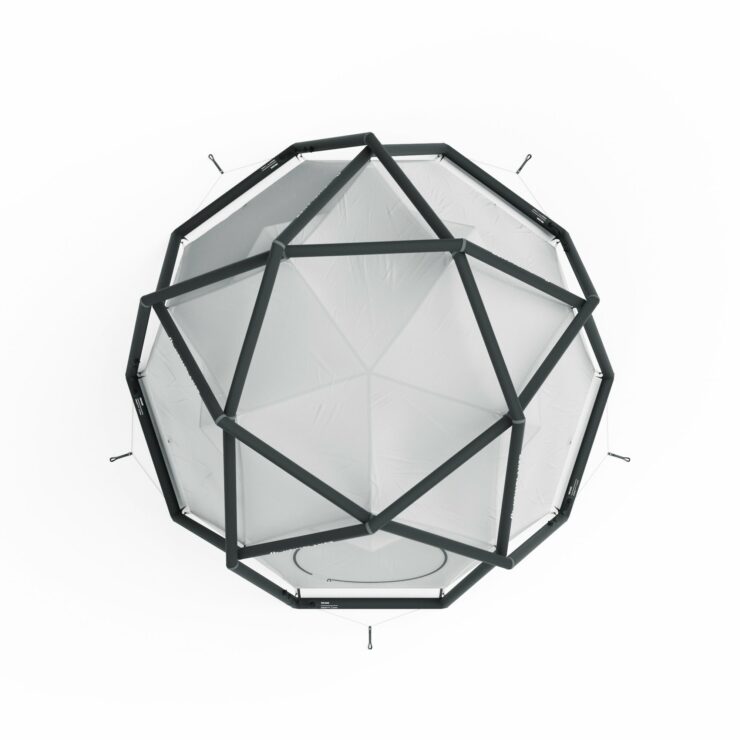
The Cave tent weighs in at 4.8kgs or 10.6lbs and it can be used with most regular camping pumps, some people already have one for pumping up mattresses, pillows, or sleeping mats, but Heimplanet sell a suitable pump separately for €49.
Some have concerns about the tent having a leak, which is understandable. These tents apparently only get punctures rarely, and when they do the main structure remains upright thanks to the multi-chamber system.
Repairing it is as easy as using the included patch kit – and it’s much quicker than fixing a broken fiberglass tent pole when in the field.
